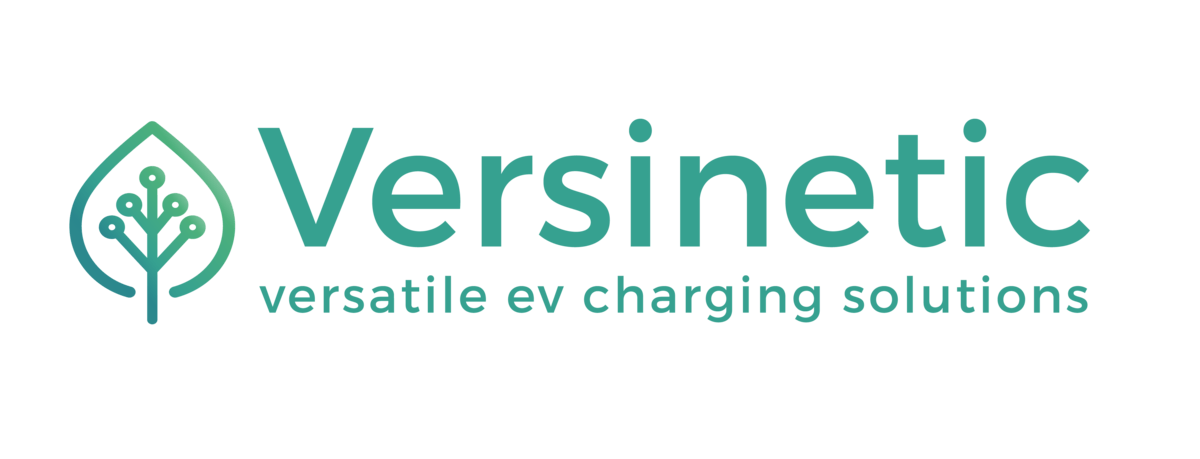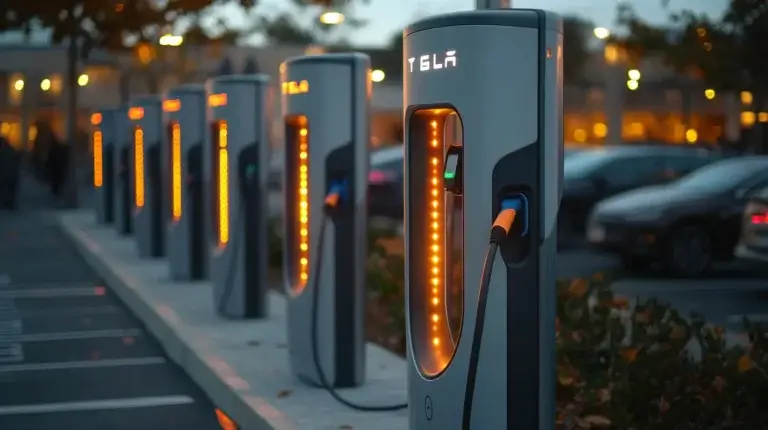OpenADR: Why Do We Need Open Automated Demand Response?
Automated Demand Response is taking off in the US and parts of Europe, but as yet has a sluggish take-up in the UK. In this article, Versinetic will help you dive into the amazing impact ADR can have in bringing abundant energy availability as we transition to an emissions-free world with Net Zero.
It’s easy to understand the purpose of local energy management, we do it all the time for domestic energy usage on an informal basis, and we’ve been doing it for decades. For example, “Economy 7” was a simple demand response mechanism introduced in 1978 that provided an overnight electricity tariff, 20% cheaper than standard rates[1]. It allowed people to heat storage heaters and boilers when demand was low.
More recently, smart meters allow customers to more easily manage their electricity costs across the day: using appliances when electricity or gas is cheaper. It saves money, not just for the customer, but also for the industry – translating into an improved economy and lower CO₂.
Load balancing takes local energy management a step further by integrating solar PV micro-generation with the electricity grid, battery storage, and EV charging to optimise energy use, grid connections, cost and domestic EVs or commercial EV fleet requirements.
All these technologies, however, just provide for independent optimisations, which would, if expanded to a national or international scale, generate feedback and grid instabilities. For example, what if multiple, independent load balancing units determine that demand in their vicinity is low, and so take the opportunity to draw large currents for charging batteries or EVs? They’d drive an excessive load from which they then have to back off before substations are tripped, and then the cycle could easily repeat itself.
Currently, these issues are mitigated at the standards level by injecting randomised timing when applying a high load. It’s a workaround. In reality, a systems-level approach is needed that spans everything from appliances at the leaf nodes to energy generation at national and international scales.
This is what OpenADR hopes to achieve, and that’s why it’s exciting.
What Is OpenADR?
OpenADR was set up in response to the California Energy Crisis of 2000-2001, whereby drought and recently deregulated energy companies artificially forced up prices by up to 800%. They did this by taking power generators offline (for ‘maintenance’), forcing acute power shortages and rolling blackouts[2] during peak power requirements.
A major consequence was to reintroduce regulations, but also to launch a public-interest energy research programme at the Lawrence Berkeley National Laboratory, as it was found that just a 5% drop in demand at critical times would have lowered prices by 50%[3]. OpenADR is the product of that research.
The value of being able to lower demand at critical times wasn’t the only advantage the nascent Automated Demand Response programme provided. As California rapidly shifted towards the increased use of solar PV in the early 2000s[4], researchers started to notice a phenomenon whereby low energy use in the middle of the day coincided with the highest delivery of solar power, while maximum power usage later would coincide with a sharp fall in solar PV.
This “Duck Curve” as the term was coined, affects market prices, and thanks to the increasing uptake of renewables, could be consequential enough for electricity prices to go negative[6]. Yet the Duck Curve is a good problem because it means that there’s an abundance of energy that can be put to good use if we have the technology (namely, ADR) to match demand to supply.
The transition towards lower power usage in devices and appliances, particularly in the 21st century, alongside switch-mode power supplies, distributed energy generation, renewable energy, and microgeneration [7], increasingly complicate the balance of supply and demand.
The relationship between energy sources and users is becoming increasingly blurred and is expected to become vastly more complex over the course of the century for the following reasons:
- Energy sources are expected to scale up to trans-continental levels as societies employ HVDC cable interconnects [8] to make the most of electrical energy needs and zero-carbon supplies.
- Electricity usage is going to accelerate as we shift transport and manufacturing away from fossil fuels, while total, global energy usage will go down by over 60% due to increased efficiency[9].
- Improved weather prediction and a wider range of energy sources will improve the potential on the supply side.
- Nevertheless, climate change will lead to more challenging extreme weather events in the coming decades, which will adversely affect the distribution of electricity.
- Smart technology will create a far more finely-grained energy ecosystem with an order of magnitude more devices.
- At the same time, electrified transport with batteries that are good for 2 million km or more will lead to a relatively large (on a domestic scale) class of products functioning as both consumers and providers of energy.
All of this is to say that managing energy in the 21st century is increasingly a matter of managing energy information flows in standardised formats. Actually, it always was, but in the past, the important energy flows had a coarse granularity matched to few, but large-scale power systems with a high level of contingency.
This is the purpose of OpenADR.
How Does OpenADR Work?
OpenADR treats energy sources as a network of Virtual Top Nodes (VTNs) which represent energy supplies, and Virtual End Nodes, or VENs (which represent energy consumers).
It has a flexible topology that allows Virtual Top Nodes to also be Virtual End Nodes, called Aggregates. Suppliers, Aggregates and Consumers are allowed to have dynamically, flexible relationships: a given consumer isn’t bound to a specific supplier or aggregate.
Virtual End Nodes are permitted to interact with VTNs, adjusting their own consumption based on received data or merely provide sensor data to VTNs. Virtual End Nodes (and VTNs) can support the subset of the functionality they need, which means that implementations for a given device can be relatively simple and can be upgraded over time.
OpenADR doesn’t prescribe the behaviour of individual VTNs and VENs; this gives implementers and manufacturers the flexibility to innovate, while the supported functionality allows OpenADR with its VTNs and VENs to fulfil its primary objectives.
How Does OpenADR Stabilise The Grid?
VTNs can predict supply information hours and/or days ahead, allowing VENs to adjust demand to meet supply based on energy priorities:
For example, adverse weather conditions may disrupt energy supplies, favouring working from home over energy used for travelling and heating commercial buildings or to prioritise emergency services.
Supply information can be used to allow VENs to time-shift usage.
For example, a popular live-streamed or broadcast TV show can cause a spike in demand during a commercial break. By notifying VEN-based servers, these can be slightly time-shifted for different customers to broaden the demand curve.
VTNs and VENs can be used to maximise energy use when there is an abundance of available supply. For example, on a windy, but sunny day, VENs can tell EVs or baseload batteries to charge up, and then use the storage when it’s more cost-effective. Moreover, by enhancing grid reliability and grid stability, it helps to “keep the lights on” in circumstances.
What’s Inside The OpenADR Specification?
OpenADR is principally a communications standard. It uses XML-formatted data tagged with pricing signals, or power usage signals to broadcast useful information to downstream VENs or accept specific information from them.
VENs themselves are set up to be listeners to VTNs (and can listen to more than one, or switch to different VTNs) and can allow information to be pushed to them or can Poll for data. This provides for additional implementation choices.
Because it uses XML-formatted data, it isn’t dependent upon a given transport medium. Most OpenADR providers and devices will be connected via the cloud, but there’s nothing to prevent them from being connected via Bluetooth, Serial, Ethernet, or even cellular technologies like GPRS. Again, because it’s defined at an application layer, it gives additional flexibility for implementers.
OpenADR is divided into different levels of compliance so that a product can support the 2.0a schema and later extend it to the 2.0b schema. This means that developers can clearly understand what they need to support or be compliant for a given feature set and to participate in the OpenADR ecosystem with full interoperability.
Who Uses OpenADR?
OpenADR has spread from a few users in California to well over 100 companies across the globe[10]. A few of them are energy companies such as Southern California Edison, EDF, or E.On. Some of them are technology companies such as Fujitsu, Hitachi, Honeywell, Kyocera, Mitsubishi, NEC, Panasonic, Philips, or Siemens.
A significant proportion of users are businesses involved with EV charging, such as BP Pulse, Shell, Versinetic, Chargepoint, EVConnect, and similar businesses across Europe and the United States. However, the bulk of the members are companies focused on the green energy transition.
OpenADR has different membership tiers: Sponsors, Contributors and Adopter members. Membership begins at $1500 to $7500 and product testing begins at $4500 for a simple VEN[11].
The website provides links to a number of case studies, including large corporates such as Ford Motors, the US National Grid and E.On, but the power of OpenADR means it’s accessible to much smaller organisations.
Consider the New Hampshire Electric Coop[12]. The NHEC really wanted to achieve two things, to be able to save money and energy for their members and also to be able to capitalise on this by looking ahead to the broader adoption of distributed energy resources.
They found that OpenADR was adept at meeting their technical needs. They could see that it was already being widely adopted as a recognised and formalised standard. It has a secure protocol, is device and manufacturer-agnostic, as well as being cost effective and flexible enough for now and the future. In other words, it met their business needs as well as their environmental and ethical goals.
How Can OpenADR Help New Companies?
OpenADR provides comprehensive support for every aspect of membership and product development. The specifications are free, as is basic registration. As well as current specifications, OpenADR explores future goals through white papers. They provide programme guides so that an implementer can proceed step-by-step from an initial concept to the final application. There’s an excellent webinar series for a wide range of tutorials and a frequently updated blog outlining progress and relevant news.
Finally, OpenADR works in collaboration with its members to improve every aspect of the ecosystem.
Conclusion
It’s said that necessity is the mother of invention. Frequently, adversity is its inspiration. The Californian drought at the beginning of the 21st century was a precursor to the kinds of climate problems we’ll increasingly face in the 21st century and was a likely contributor to its energy crisis[13].
OpenADR was the technological response to an early energy crisis. It represents an important component in our ability to, not just mitigate the worst of its impacts, but also help provide the basis for a flourishing 21st century.
OpenADR goes beyond abstract theories on how to provide grid stability in the face of energy technologies, which can be, in themselves, intermittent. It provides a concrete example of how to manage them at any scale, an example that can be freely shared for the mutual benefit of our economy and security.
In addition, it represents positive feedback by instilling confidence among other stakeholders in the energy industry. Meaning, it is already helping to accelerate decarbonisation; bringing the tipping point for clean energy dominance closer and the ultimate goal of Net Zero in our lifetimes.
References
[1] https://en.wikipedia.org/wiki/Economy_7
[2] https://en.wikipedia.org/wiki/2000–2001_California_electricity_crisis
[3] https://www.iea.org/reports/the-power-to-choose-demand-response-in-liberalised-electricity-markets
[4] https://en.wikipedia.org/wiki/Solar_power_in_California#History
[5] https://www.vox.com/energy-and-environment/2018/3/20/17128478/solar-duck-curve-nrel-researcher
[7] https://www.sciencedirect.com/science/article/abs/pii/S0959652619339617
[8] https://energy.ec.europa.eu/topics/infrastructure/electricity-interconnection-targets_en
[9] https://www.sustainabilitybynumbers.com/p/iea-energy-scenarios
[10] https://openadr.memberclicks.net/members
[11] https://openadr.memberclicks.net/build-a-product
[12] https://openadr.memberclicks.net/assets/NHEC%20Case%20Study%203-4.pdf

Julian Skidmore is Versinetic’s EV Industry Analyst.
He has a Computer Science degree from UEA and an MPhil in Computer Architecture from Manchester University, as well as over 20 years of experience in embedded systems development.
As a senior software engineer, Julian has worked on EV charging and V2G projects, and has also co-authored EV-related articles for the electronics industry press.
Julian is a proponent of the zero-carbon society and a Guardian News ‘climate hero’. He has owned a battery EV for over two years, has investments in wind farm cooperatives, and has a 4KW domestic solar PV installation.



